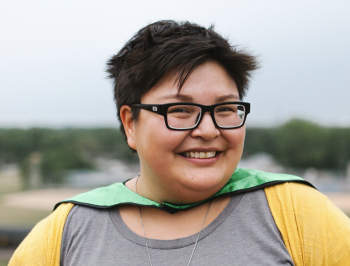Image Caption
Local Journalism Initiative Reporter
Windspeaker.com
A documentary about a series of wrestling events in Indigenous communities throughout northern Manitoba is now being screened at various theatres across Canada.
The film is titled The Death Tour. The wrestling trip, which starts in Winnipeg each year, lasts a couple of weeks.
Its moniker was earned for the physical hardships and emotional tolls endured on the road. Wrestlers who for the most part are envisioning more lucrative careers battle through lengthy winter days, travelling from community to community, to provide a few hours of entertainment for adoring Indigenous fans.
During the film tour participants at times travel through some harsh weather conditions. And once they arrive in a community, they spend additional hours setting up the venue where they will compete in.
The Death Tour is co-directed by Sonya Ballantyne, a member of Misipawistik Cree Nation in northern Manitoba.
“I’ve always been a wrestling fan, ever since I was a little kid,” she said. “I’ve loved it basically since I was a baby. I have a picture of myself as a drooling baby with my dad and my grandfather watching I think Stampede Wrestling out of Calgary back in the ‘80s.”
The Death Tour has helped launch the careers of numerous wrestling greats.
“I actually encountered The Death Tour when I was about six or seven years old,” Ballantyne said. “It was one of their summer tours they did back then. And I met the wrestler Edge, Adam Copeland, on his summer Death Tour. It was pretty cool to meet him just because it made wrestling more real to me.
“Having somebody over six feet tall and actually look like a wrestler in my home reserve was something that was super cool to me. And I never forgot it.”
Legendary wrestling great Chris Jericho is the executive producer of the film.
Ballantyne was asked to join The Death Tour team by Stephan Peterson, who wrote and directed the film.
“It’s been in production for roughly eight years,” Ballantyne said. “I came on in the fourth year, after Stephan, my fellow director, realized there was a huge Indigenous component that he didn’t feel comfortable enough to be able to explore on his own.”
The Death Tour has been ongoing since the 1970s.
“There had been a lot of documentaries about The Death Tour itself, with like a focus on the alumni and all of the famous people who have done it and have gone on to have huge careers,” Ballantyne said. “Until we did, no one had ever talked about the why it continues because it’s really expensive to go up there. You don’t really make that much money doing it if you’re a wrestler. And the potential for injury or living very difficultly for 2-3 weeks at a time. I was wondering why you would want to do that. It was fun to explore that topic while we were up there.”
The film had recent screenings in Toronto and Edmonton.
It also started screening in Winnipeg and has two remaining dates, Aug. 15 and Aug. 18, at
Dave Barber Cinematheque.
The film will also screen at theatres in Calgary, Saskatoon, Vancouver and Regina later this month and in Montreal in September.
The Death Tour features behind the scenes views of the wrestlers as they travel to different communities. At times they also provide motivational speeches to the Indigenous youth, detailing personal moments including addictions they’ve battled during their lives.
The film also discusses the hardships some of the communities are facing, including large amounts of suicides.
“We had shows cancelled while we were up there,” Ballantyne said. “And we knew that each time a show was cancelled it was because somebody had passed away. I was really worried initially about including it.”
Discussions with fellow reps of the film convinced Ballantyne to keep tragic parts in the film.
“Whenever my community was mentioned on the news, it was always for a negative thing,” Ballantyne said of when she was growing up. “And I didn’t want to do that initially to the communities we encountered because it was like the lowest-hanging fruit for me. I thought it was important to not sugarcoat that part of it because if you sugarcoat it, you’re ashamed of it.”

